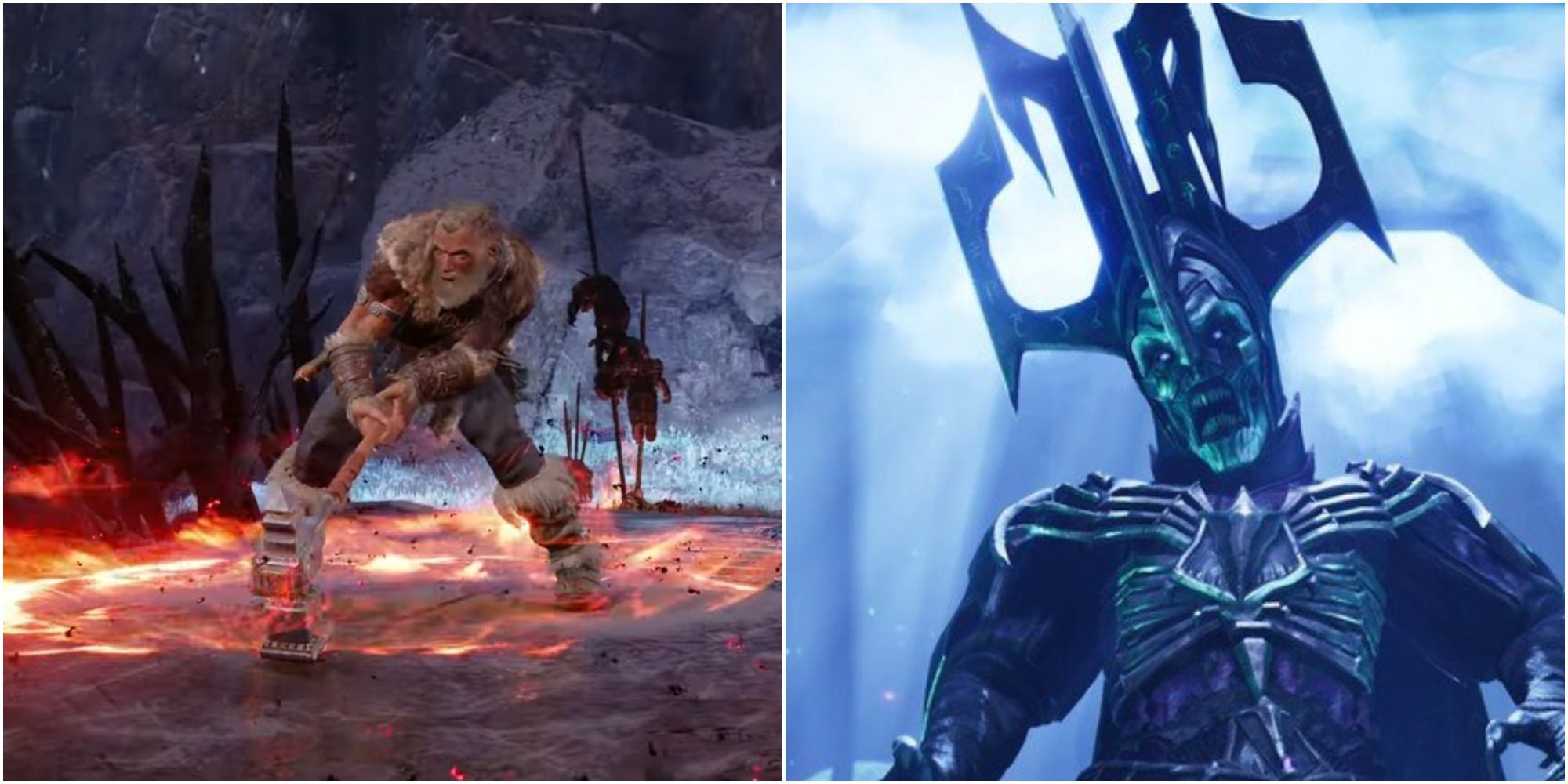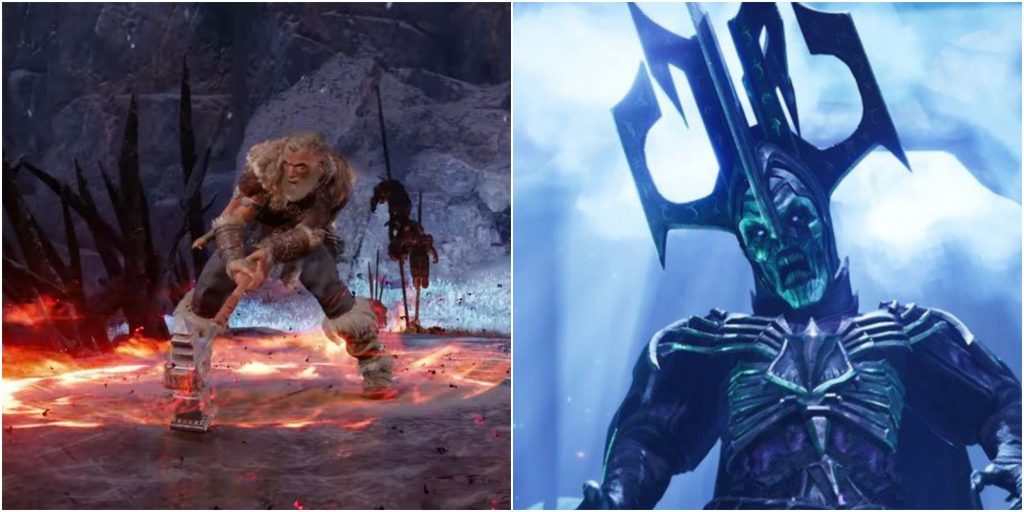
Icewind Dale is a region north of the Sword Coast, beyond the Spine of the World Mountain range. It is here that Dungeons & Dragons: Dark Alliance follows the Adventures of the infamous drow Drizzt Do'urden and his loyal companions. The game follows on from the events of R. A. Salvatore's book, The Crystal Shard.
RELATED: Dungeons & Dragons: Dark Alliance – Tips For Solo Players
Icewind Dale has appeared many different times over the course of Dungeons & Dragons history. In 5th Edition, Icewind Dale has been featured as the setting in some of the best D&D campaigns. Yet despite its frequent appearance, some fans might not know these details about the setting.
10 The Ten Towns
Despite being a frozen wasteland, there are many inhabitants in the Icewind Dale. The arctic landscape is home to a group of settlements known as the Ten Towns. This region of land has appeared in many campaigns for D&D, including 2020's "Rime of the Frostmaiden."
The capital of the Ten Towns is Bryn Shander, which Drizzt mentions in the introductory voiceover. The merchant Kartik brings up another town, Caer-Konig. This is when he talks about where Regis, a character that may become playable, joining the main characters.
9 The Dragons Who Named The Dale
Dragons are one of the most aspects of D&D, considering accounts for 50% of the name. In the Companions' first outing in The Crystal Shard, Wulfgar and Drizzt take down Ingeloakastimizilian, better known as Icingdeath — after whom one of Drizzt's swords is named.
Icingdeath never gets a chance at revenge; however, Dark Alliance debuts a new white dragon that is revealed to be Icingdeath's mate, who tries to enact vengeance upon the party. Ixbillailzakzillimiliax is known by the name Icewind, and serves as the namesake for the very Dale she reigns over.
8 The Reghed
The Reghed Glacier was a huge glacial wasteland, home to a hot spring named the Evermelt. This was where the dragon Icingdeath made his home. The Glacier gave its name to a group of migratory hunters called Reghedmen or Reghed Barbarians — Wulfgar was one of these.
Many tribes of these barbarians each took their name from a famously hardy animal, such as the tribes of the wolf or elk. These tribes were at war with the inhabitants of the Ten Towns until the events of The Crystal Shard. Afterwards, Wulfgar became the King of the Tribes.
7 Goblins
Goblins are a small race of humanoid creatures known for their distinctive features and tendency to be a nuisance. They appear all over the Forgotten Realms, in many different tribes and great numbers. Typically, goblins don't start fights unless provoked, something demonstrated in Dark Alliance.
Goblins tend not to wield magic, so seeing a spellcasting goblin is rare. However, there is a strange sub-race of Goblins in Icewind Dale called the Nilbog. These are Goblins possessed by trickster spirits, turning them into an impish, jester-like member of their species. Their magic makes it difficult to harm them, never mind kill them.
6 Verbeegs
Verbeegs are a species of Giant-kin that closely resemble regular humans, except for their lengthier limbs and elongated faces. These beasts use their significant cunning to lure enemies into traps where they would be easier to fight. Many Verbeegs use thrown spears as their go-to weapon.
RELATED: Dungeons & Dragons: Dark Alliance – Tips For Co-Op
Verbeegs honor the giant hierarchy, the Ordning, despite being second from the bottom in their ranking among other Giant-kin. Some Verbeeg worship nature gods and may be granted innate magic, similar to that of a ranger.
5 Kelvin's Cairn
Kelvin Duarol was an immensely powerful frost giant who had at one point wielded the powerful artifact, the Crystal Shard. According to barbarian legends, the frost giant was so powerful that he managed to enrage the god Tempus, resulting in Tempus fighting and subsequently slaying Kelvin.
The god of war then gathered stones from all around the Icewind Dale and piled them on top of the giant's body to the site of his death. This gave the area the name Kelvin's Cairn — the name of the main hub in Dark Alliance where the companions rest between battles.
4 The Vonindod
Over 25,000 years before the events of The Crystal Shard and Dark Alliance, a conflict known as the Thousand Year War took place between dragon kind and giants. This war ultimately resulted in a loss of giant culture and civilization. Meanwhile, the dragons gained land in many of giant-kind's previous cities.
The Vonindod was one of the weapons that the giants made to combat dragons. Standing at over 80 feet tall and constructed of adamantium and mithril, the Vonindod was supposedly so massive it prevented dragons from attacking cities with its reach. After the war ended, the construct was taken apart. Pieces of it were kept in major giant cities; however, they have been lost to time in Icewind Dale.
3 Akar Kessell's Past
Akar Kessell was an apprentice wizard. When he was barely capable of casting cantrips, he killed his mentor and came into possession of the Crystal Shard. Due to his inexperience as a wizard, Kessell causes a huge avalanche with the Crystal, leading to his demise.
At one point Kessell returns to life (or rather undeath) as a Wight, an undead given life through sheer hatred. He is desperate to reunite himself with the Crystal Shard — which has been destroyed.
2 The Sea Of Moving Ice
The Sea of Moving Ice is a collection of giant icebergs west of Icewind Dale. The land is almost entirely uncharted, with the glaciers shifting around so frequently only the best of navigators could sail the waters in between each iceberg. Many ice-locked shipwrecks and giant settlements are hidden here, encased in ice.
The Reghed Barbarians call the area the Floating Land. For a long time, most believed it to be a forbidden area, and so avoided it. At one point, though, the Tribe of the Seal did attempt to make a settlement on the icebergs. As an important location in Icewind Dale, the Sea of Moving Ice deserves to be visited properly in a 5th Edition sourcebook.
1 The Spine Of The World
The Spine of the World is a giant mountain range separating the freezing expanses of the Reghed Glacier from the civilizations of the Sword Coast and the rest of the North. Many of the mountains stand at over 20,000 feet high, and all but the smallest were permanently covered in snow. This mountainous backdrop provides consistency between the diverse levels, making the scenery one of Dark Alliance's best features.
It is said that on certain winter days, due to the snow on the mountains and the white, sunless hue of the sky, the mountains appeared to hold up the sky. This may where the name of the Spine comes from, or it could be because the mountains resemble a spinal shape.
NEXT: Easter Eggs Only True Fans Caught In Dungeons & Dragons: Dark Alliance
